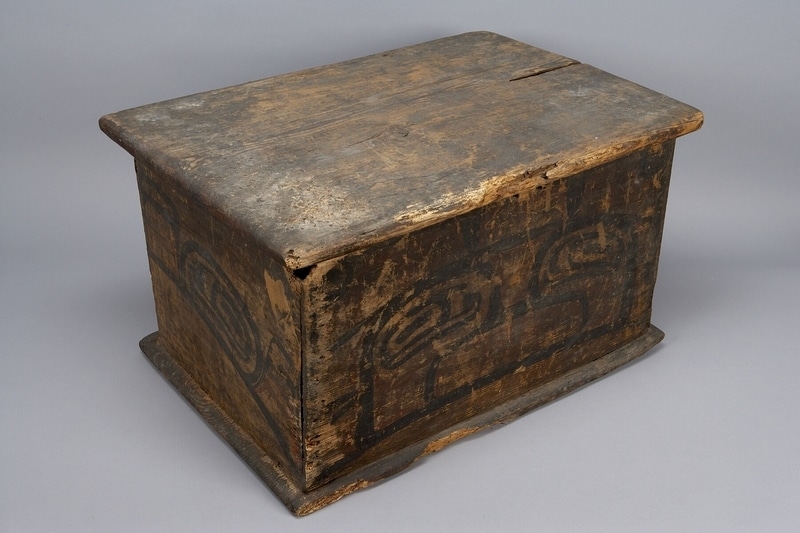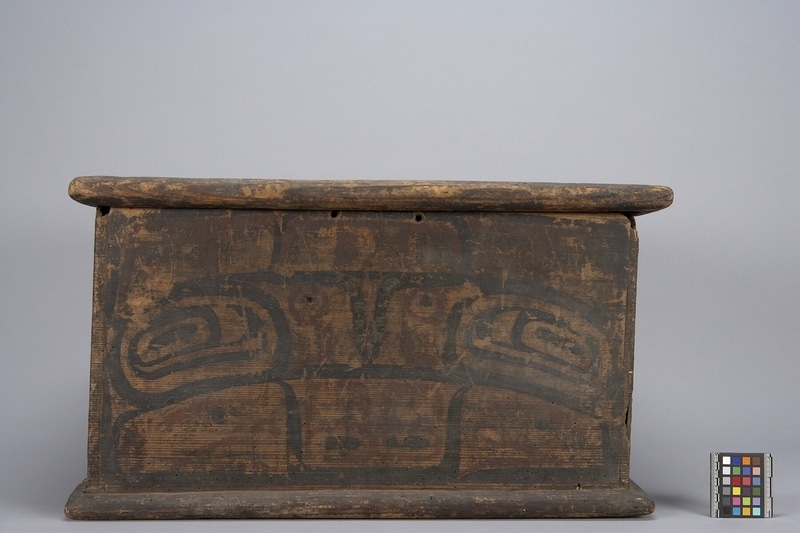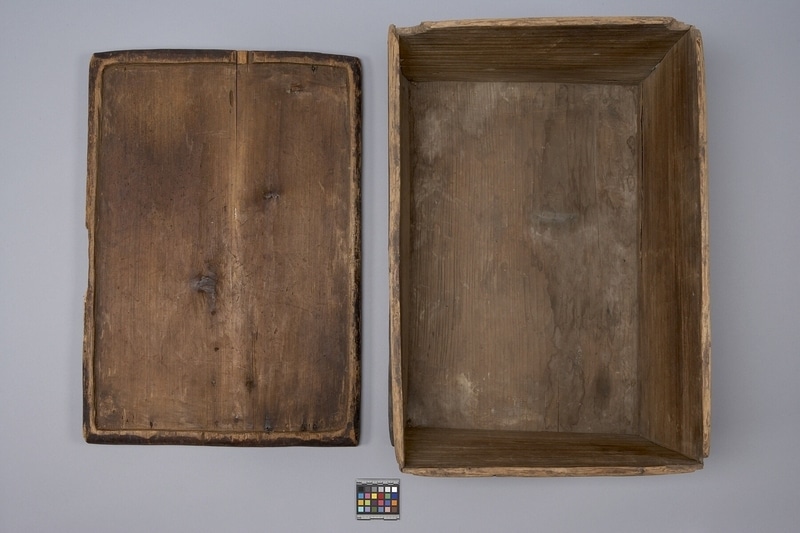Bentwood Chest Item Number: Nb3.1480 a-b from the MOA: University of British Columbia




Description
Bentwood chest with lid. The chest base has a lip at the bottom, and is painted with formline designs in red and black on all four sides of the base. The lid (part b) has a rounded edge and a slight lip.
History Of Use
Bentwood boxes were used primarily for storage of food, implements, and ceremonial regalia, but were also used for cooking and serving food. They were trade goods or gifts, and were symbols of wealth and prestige. Boxes used for ceremonial purposes were usually more highly decorated than those for utilitarian use.
Specific Techniques
Bentwood, or kerfed-corner, containers are constructed by a process unique to the Northwest Coast Aboriginal peoples. The carver begins with a single straight-grained plank of red cedar, or sometimes yellow cedar, spruce, or yew. The surface of the plank is finished with chisels, adzes, and knives; in earlier times, it was smoothed further with sandstone or dried sharkskin. Then three parallel kerfs, or grooves, are carved out at measured points across the width of the board, at right angles to the long edge. The kerfs, which will become three corners of the box, allow the board to be steamed until the wood fibres are softened, and then carefully bent to form a box with symmetrical sides. The final corner, as well as a fitted base, are joined and fastened with pegs (through drilled holes) or laced with spruce root or twisted cedar withes (branches). Storage boxes also have fitted lids of cedar, hollowed from the inside. Finally, painted compositions may be applied to the completed box and shallow carving added to bring the forms into relief. A well-made bentwood box is watertight. Historically, most boxes were used to store preserved foods and material goods; plain cooking boxes could be used to steam or boil food by adding water and heated stones.
Narrative
According to Peter Macnair, and Howard Roloff, this chest and Nb3.1334 were both owned by a Salish woman on Vancouver Island (Comox or Duncan area) who had passed away c. 1984. Both chests are thought to have originated in the Bella Bella area, based on the style of painting.
Item History
- Made in British Columbia, Canada
- Collected in Vancouver Island, British Columbia, Canada
- Owned by Northwest Trader before December 19, 1985
- Received from Museum of Anthropology Shop Volunteers (Funding source) and Northwest Trader (Seller) on December 19, 1985
What
Who
- Culture
- Coast Salish and Heiltsuk
- Previous Owner
- Northwest Trader
- Received from
- Museum of Anthropology Shop Volunteers (Funding source) and Northwest Trader (Seller)
Where
- Holding Institution
- MOA: University of British Columbia
- Made in
- British Columbia, Canada
- Collected in
- Vancouver Island, British Columbia, Canada
When
- Ownership Date
- before December 19, 1985
- Acquisition Date
- on December 19, 1985
Other
- Condition
- fair
- Current Location
- Case 11
- Accession Number
- 1088/0001 a-b